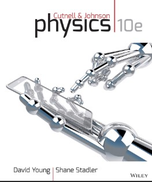(a) Energy is required to separate a nucleus into its
Chapter , Problem 16(choose chapter or problem)
(a) Energy is required to separate a nucleus into its constituent nucleons, as Figure 31.3 indicates; this energy is the total binding energy of the nucleus. In a similar way one can speak of the energy that binds a single nucleon to the remainder of the nucleus. For example, separating nitrogen 14 7N into nitrogen 13 7 N and a neutron takes energy equal to the binding energy of the neutron, as shown below: 14 7N 1 Energy 13 7N 1 1 0n Find the energy (in MeV) that binds the neutron to the 14 7N nucleus by considering the mass of 13 7 N (atomic mass 5 13.005 738 u) and the mass of 1 0n (atomic mass 5 1.008 665 u), as compared to the mass of 14 7N (atomic mass 5 14.003 074 u). (b) Similarly, one can speak of the energy that binds a single proton to the 14 7N nucleus: 14 7N 1 Energy 13 6C 1 1 1H Following the procedure outlined in part (a), determine the energy (in MeV) that binds the proton (atomic mass 5 1.007 825 u) to the 14 7 N nucleus. The atomic mass of carbon 13 6C is 13.003 355 u. (c) Which nucleon is more tightly bound, the neutron or the proton?
Unfortunately, we don't have that question answered yet. But you can get it answered in just 5 hours by Logging in or Becoming a subscriber.
Becoming a subscriber
Or look for another answer
